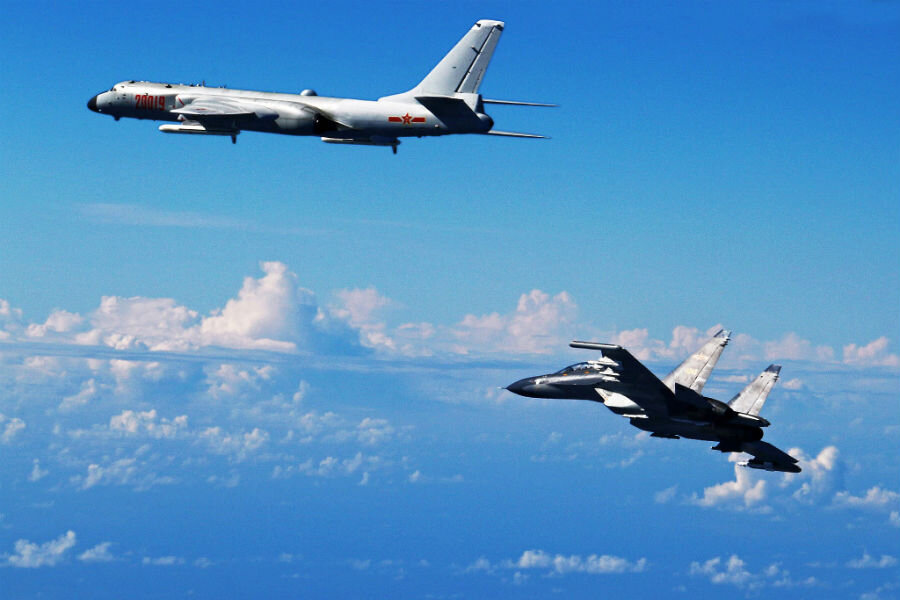Japan scrambles fighter jets as China gets too close
Loading...
Chinese aircraft conducting a major military exercise in the East China Sea got a little too close to Japanese territory Sunday, exacerbating tensions between the two powers in the region.
Japanese fighter jets flew to intercept dozens of Chinese aircraft as they flew over a strategically important strait between Okinawa and the Miyako islands near Taiwan. While the planes did not technically violate Japanese territory, it is reportedly the first time that Chinese military aircraft have been seen in the area.
Japan and China have had a long, contentious history stemming back long before World War II. The current manifestation of tensions between the two powers, however, comes from China's establishment of the "East China Sea Air Defense Identification Zone" (ADIZ) in November 2013. The Chinese protection zone encompasses the Shenkaku islands, which are under the control of Japan. China claims the islands, or Diaoyu, as it refers to them, as its own.
Japan strongly disagrees with China's claim of ownership.
“We cannot accept the implication that the airspace over the Senkaku islands, which are part of our territory, belongs to China," Chief Cabinet Secretary Yoshihide Suga told reporters in Tokyo on Monday, according to Bloomberg. The islands are currently uninhabited, but the surrounding waters give Japan important resources, such as oil and fish, and are strategically important in a military sense.
China's state news agency, Xinhua, said that there were 40 Chinese planes conducting routine practice drills in the area at the time of the confrontation. The planes were engaged in various activities, including in-flight refueling practice as well as simulated attacks on sea-based targets.
Shen Jinke, spokesperson for the People's Liberation Army (PLA) Air Force, told Xinhua that the Chinese forces involved included H-6K bombers, Su-30 fighters, and air tankers, all operating "in accordance with the needs of the Air Force to defend national sovereignty and security, as well as to maintain peaceful development."
University of Miami political science professor June Teufel Dreyer told The Japan Times that the Chinese drills in the area, while not technically a violation of Japanese territory, were intended to be more threatening than the PLA claims.
"[This] is a response to what Beijing will allege is a provocation by Japan in joining the U.S. in South China Sea drills despite Beijing warning Tokyo against participating," Prof. Dreyer said. Japan had announced it was joining the US in drills last week. A large portion of Japanese oil and gas arrives through shipping lanes in the South China Sea, though Japan does not claim any territory in the region.
This is far from the first time Japanese forces have stood off against the Chinese in this manner. As recently as July, two Japanese jets took what Chinese officials called "provocative action" against Chinese aircraft patrolling the East China Sea, according to Reuters.
However, the Sunday confrontation is unusual in the sheer size of the force involved on China's part, as Xu Guangyu, senior adviser at Beijing-based research group the China Arms Control and Disarmament Association, told Bloomberg.
"It’s not been seen often in the past," said Xu, who is also a retired major general in the PLA. "The exercise aimed at enhancing open sea combat ability, and it’s part of the military’s reform to familiarize the troops with a battlefield environment."
"Americans and Russians both routinely conduct this type of exercise," he added.








